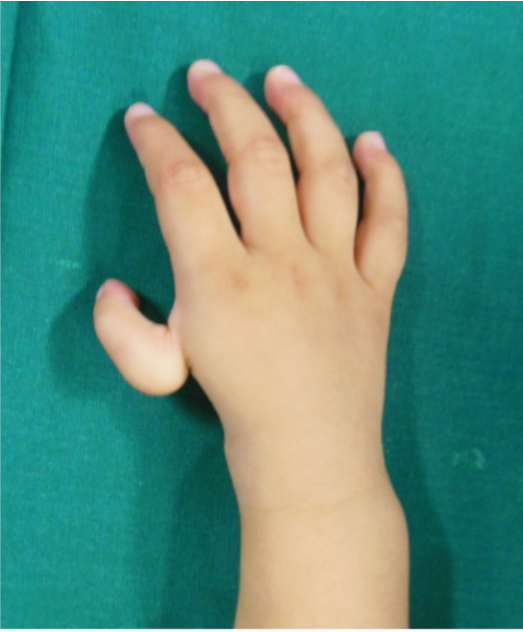
What is Pollicization?
Pollicization is a surgical procedure performed to create a thumb-like structure from an existing finger, typically the index finger, to replace a missing or non-functional thumb. This procedure is commonly performed in cases of congenital absence of the thumb (aplasia) or traumatic thumb amputation. Pollicization aims to restore hand function by providing a functional thumb, improving grip strength, pinch grasp, and overall hand function.
How is Pollicization performed?
Pollicization involves complex surgical techniques to transfer the index finger to the thumb position and reconstruct the hand anatomy to create a functional thumb. The procedure typically involves reshaping the index finger to resemble a thumb, repositioning tendons, ligaments, and nerves, and reconstructing the hand muscles and soft tissues. The surgeon carefully assesses the patient's hand anatomy and functional requirements to plan and execute the pollicization procedure effectively.
Who is a candidate for Pollicization?
Individuals born with congenital absence of the thumb or those who have lost their thumb due to trauma or injury may be candidates for pollicization. Common indications for pollicization include conditions such as thumb aplasia, traumatic thumb amputation, or severe thumb deformities that significantly impair hand function. A consultation with a hand surgeon or plastic surgeon is necessary to determine if pollicization is the appropriate treatment option based on individual circumstances.
What are the benefits of Pollicization?
Pollicization offers numerous benefits for individuals seeking to improve hand function and restore thumb function. By creating a functional thumb-like structure from an existing finger, pollicization can enhance grip strength, pinch grasp, precision handling, and overall hand function. Additionally, pollicization can improve the aesthetic appearance of the hand and enhance the individual's ability to perform daily activities and tasks.
What is the recovery process like after Pollicization?
Recovery from pollicization surgery involves a period of immobilization, wound care, and rehabilitation to optimize hand function and promote healing. Patients may undergo physical therapy and occupational therapy to regain strength, dexterity, and coordination in the reconstructed thumb. The timeline for recovery varies depending on factors such as the extent of the procedure, individual healing factors, and adherence to post-operative instructions provided by the surgeon.
What are the risks and complications associated with Pollicization?
Like any surgical procedure, pollicization carries certain risks and complications. These may include infection, bleeding, wound healing problems, nerve injury, tendon dysfunction, stiffness, or unsatisfactory functional outcomes. Additionally, individuals with complex hand anatomy or associated medical conditions may be at increased risk for complications. However, the benefits of pollicization often outweigh the risks, especially when thumb function significantly impacts hand function and quality of life.
Why choose VMG Hospital for Pollicization?
VMG Hospital in Hisar, Haryana, is a trusted provider of comprehensive hand and plastic surgery care and treatment for individuals with congenital or acquired hand conditions. Our team of skilled hand surgeons and plastic surgeons has extensive experience in performing pollicization procedures, ensuring safe and satisfactory outcomes for our patients. With state-of-the-art facilities and a patient-centered approach, VMG Hospital is committed to delivering compassionate care and helping patients regain thumb function and improve hand function and quality of life.